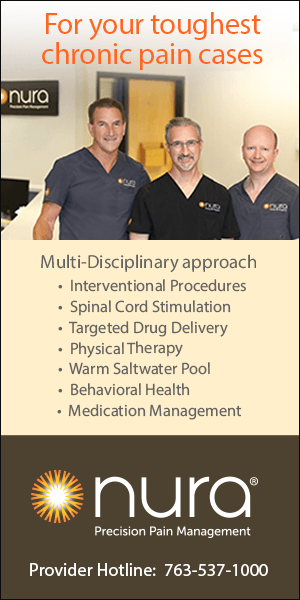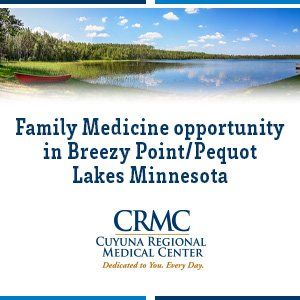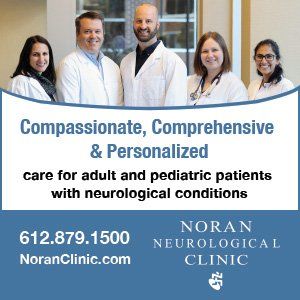adon is the leading cause of lung cancer in people who never smoked. Smokers who are also exposed to radon have an increased risk of developing lung cancer.
cover story two
Radon and Lung Cancer in Minnesota
A bigger problem than you think
By Nancy Torrison
Radon is common across the state of Minnesota due to its unique geology and glacial history. Radon is an odorless, colorless, and tasteless radioactive gas that forms in the soil when natural minerals like uranium and radium decay and break down. The amount of radon in the air is measured in picocuries per liter of air, or pCi/L. The average radon level in Minnesota is more than three times higher than the U.S. radon level: 4.2 pCi/L (picocuries of radon per liter of air) compared to 1.3 pCi/L.
Seventy two percent of Minnesota counties have radon levels that are considered high and unsafe based on testing homes and commercial properties throughout the state. Also based on this data, radon can be found in two out of every five homes in the state. The Minnesota Department of Health collects data on key indicators statewide for public health and environmental categories. County-level data from the MN Public Health Data Access portal (MN Data) helps local public health organizations facilitate effective tracking and evaluate public health actions and policies.
The Minnesota Department of Health (MDH) estimates that more than 40% of Minnesota homes have dangerously high radon levels. Homes with basements are more likely to have unsafe radon levels. Whether a house is old, new, tight or drafty, radon finds a way in if it is in the soil under the house. To learn more about radon levels in your county, visit https://mndatamaps.web.health.state.mn.us/interactive/radon.html
Another reason for high radon levels in Minnesota is its cold climate. Home heating units draw radon up into the house from the soil, and when Minnesota homes are locked up for months at a time, the radon becomes trapped inside the walls of the home. When people breathe in radon, the radioactive particles can get trapped in their lungs, increasing the risk of lung cancer over time.
A simple radon test that is sold in most hardware or lumber stores can help Minnesotans take the first step in determining whether they have a problem in their home. The kits cost less than $15.00 and are considered accurate in identifying radon levels.
More than 40% of Minnesota homes have dangerously high radon levels.
In homes found to have unsafe radon levels, the solution is to hire a radon mitigation expert who will install a system that includes a ventilating pipe and fan. The system will pull the radon out from under the home and pump it back outside. Unfortunately, the mitigation system comes with a cost of $1000 or more and for many families could be a financial hardship. While there are no programs available to assist with radon mitigation, many of Minnesota’s certified contractors will work with homeowners to find a more cost-effective way to remove radon from their homes. The goal is to help every Minnesotan live with clean air, and with today’s mitigation technology, radon levels in most homes can be reduced to 2 pCi/L or below.
Morbidity and Mortality
Lung cancer is the number one cause of cancer death in the United States, accounting for one in five cancer deaths. The American Cancer Society estimates that there will be about 234,580 new cases of lung cancer in 2024, 116,310 in men and 118,270 in women. There will be approximately 125,070 deaths from lung cancer in 2024, 65,790 in men and 59,280 in women. Most people with a diagnosis of lung cancer are 65 or older, although some are diagnosed younger than 45. More than half are nonsmokers at the time of diagnosis.
According to the American Lung Association, the rate of new lung cancer cases a year in Minnesota is 55.2 per 100,000 residents, which places Minnesota in the average category. The percentage of Minnesotans alive five years post-diagnosis is 31%, which is 3.4 percentage points higher than the national five-year survival rate. Minnesota ranks number 4 among the 42 states that publish survival data.
Based on data from SEER (The National Cancer Institute’s cancer statistics and tracking program), 74% of U.S. lung cancer cases are diagnosed in stage 3 or 4, when it is difficult to beat, and the five-year survival rate averages less than 18%. Despite research evidence that screening with a low-dose CT scan (versus a chest x-ray or no screening) would improve early detection and the current five-year survival rate of less than 27%, less than 6% of eligible Americans have been screened. Less than 8% of eligible Minnesotans have been screened.
Comparing Diagnostic Methodologies
Screening means testing for a disease when there are no symptoms or history of that disease. Doctors recommend a screening test to find a disease early, when treatment may work better. The only recommended screening test for lung cancer is low-dose computed tomography (also called a low-dose CT scan, or LDCT).
USPSTF guidelines were largely based on the findings of a study called the National Lung Screening Trial (NLST), launched in 2002 by the American College of Radiology Imaging Network with primary results published in 2011. NLST enrolled 53,454 current or former heavy smokers ages 55 to 74. Participants were required to have a smoking history of at least 30 pack-years and were either current or former smokers without signs, symptoms or history of lung cancer. Participants were randomly assigned to receive three annual screens with either low-dose helical CT or standard chest X-ray.
While smoking continues to be the number one cause of lung cancer, radon is the number two overall cause, and it is not considered in the screening eligibility criteria set forth by the United States Preventive Services Task Force (USPSTF) because the primary study used to set guidelines looked only at age and smoking history in its participants. The EPA estimates that 21,000 deaths each year are caused by radon exposure in the U.S.
The NLST compared two ways of detecting lung cancer: low-dose helical computed tomography (CT), often referred to as spiral CT, and standard chest X-ray. Helical CT uses X-rays to obtain a multiple-image scan of the entire chest (pie slice images), and a standard chest X-ray produces a single image of the whole chest in which anatomic structures can cover lung nodules.
The study findings reveal that participants who received low-dose helical CT scans had a 15% to 20% lower risk of dying from lung cancer than participants who received standard chest X-rays. The superior diagnostic capability leads directly to early surgical and other treatment interventions when lives can still be saved.
In 2013, the USPSTF recommended annual LDCT screening for lung cancer in adults 55 to 80 years old who had a 30 pack-year smoking history or more and who currently smoked or had quit within the past 15 years.
21,000 deaths each year are caused by radon exposure in the U.S.
In November 2023, based on changing mortality data, the USPSTF guidelines were changed to recommend yearly screening for lung cancer in people 50 to 80 years old who smoke or formerly smoked and have a 20-year or greater pack-year history. Today the American Cancer Society recommends lung screening in people 50-80 years old who smoke or formerly smoked, regardless of when they quit.
A second trial, the Dutch-Belgian Lung Cancer Screening Trial, also found significant mortality benefits from lung screening in high-risk populations. The two found a 20% to 24% mortality benefit from lung screening in high-risk smokers, and as a result, organized lung cancer screening (LCS) programs have been initiated in several countries including Canada, the United States, South Korea and Poland, with more regional pilot programs expanding across the United Kingdom, Germany, the Netherlands and Italy.
Improving Guidelines and Best Practice
The USPSTF guidelines calls for shared decision-making between patients and a qualified health professional. Additionally, the Centers for Medicare and Medicaid Services (CMS) require shared decision-making as part of counseling before referring Medicare beneficiaries for screening. Shared decision-making conversations should include:
- Interventions for smoking cessation
- An explanation of the lung screening process
- A discussion about the benefits, risks and harms of screening for lung cancer that allows patients to outline their own preferences and values.
Existing lung cancer screening guidelines do not consider other risk factors of lung cancer such as radon or asbestos exposure and family history, leaving decisions about screening to individual physicians. The guidelines also neglect to consider racial, ethnic, socioeconomic and sex-based differences in smoking behaviors or lung cancer risk. (https://www.ncbi.nlm.nih.gov/pmc/articles/PMC7528802/)
Multiple barriers, including patient awareness, access to screening, cost and proper referrals from healthcare professionals, further contribute to the inequities in implementation and dissemination of lung cancer screening.
In the U.S. the low-dose computed tomography (LDCT) scan for lung cancer screening is underutilized. Studies in the U.S. suggest that up to one-third of providers do not know the current lung cancer screening guidelines. Thus, identifying the barriers to utilization of the LDCT scan is essential. This lack of awareness among clinicians that lung cancer screening is available, recommended for those who meet eligibility criteria and are not presenting symptoms, and is covered by Medicare and other insurers is an often-cited barrier to improved screening rates and earlier detection of lung cancer in the U.S.
Economic evaluations have suggested that cancer screening programs are cost effective and sometimes even cost saving. A study conducted by JAMA Oncology revealed that lung screening was even more cost-effective when screening former smokers who had quit for 25 years or more.
Improved provider education at clinics and hospitals and improved EMR-based best practice alerts may improve early detection and therefore the survival rate of lung cancer. Increasing the rate of lung cancer screening in Minnesota is simply the first step in finding lung cancer early when it is easier to treat successfully. The next step is to develop a better understanding of lung cancer causes, signs and symptoms among healthcare professionals and the general public so that people with lung cancer who are not eligible for screening receive their diagnosis early enough to be treated successfully. A CT scan is recommended for those who present symptoms of lung cancer, whether they smoked or not, such as chest pain, a cough that won’t go away, coughing up blood, unusual fatigue, chest or shoulder pain, losing weight without trying, shortness of breath, and wheezing.
Conclusion
Lung screening is important and even though radon is not currently listed in USPSTF eligibility criteria, radon exposure is a serious and overlooked public health hazard that can lead to lung cancer. It is important that we address policies that limit access to the best diagnostic options. It is also important for physicians to keep pace with advances in lung cancer diagnosis and treatment. For patients who have been exposed to radon (or have other risk factors for lung cancer such as secondhand smoke, asbestos or family history of lung cancer), a clinical assessment is advised. Physicians must use their clinical judgment to determine next steps that are in the best interest of their patient, such as a referral to lung screening.
Nancy Torrison,
is the executive director of A Breath of Hope Lung Foundation.
MORE STORIES IN THIS ISSUE
cover story one
Serious Illness Communication: Building a statewide standard of care
By Lori Brostrom, MBA
cover story two
Radon and Lung Cancer in Minnesota: A bigger problem than you think




















